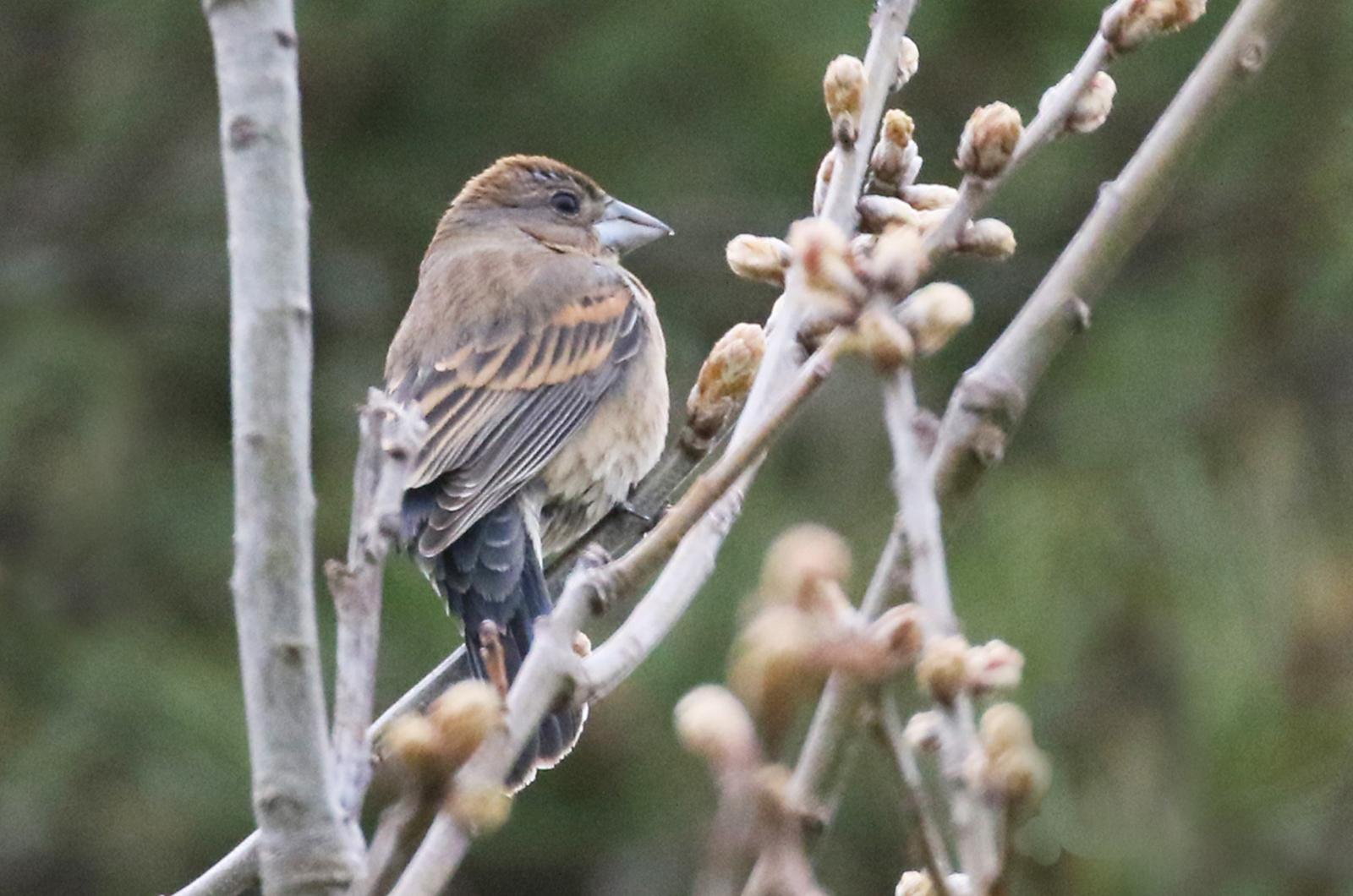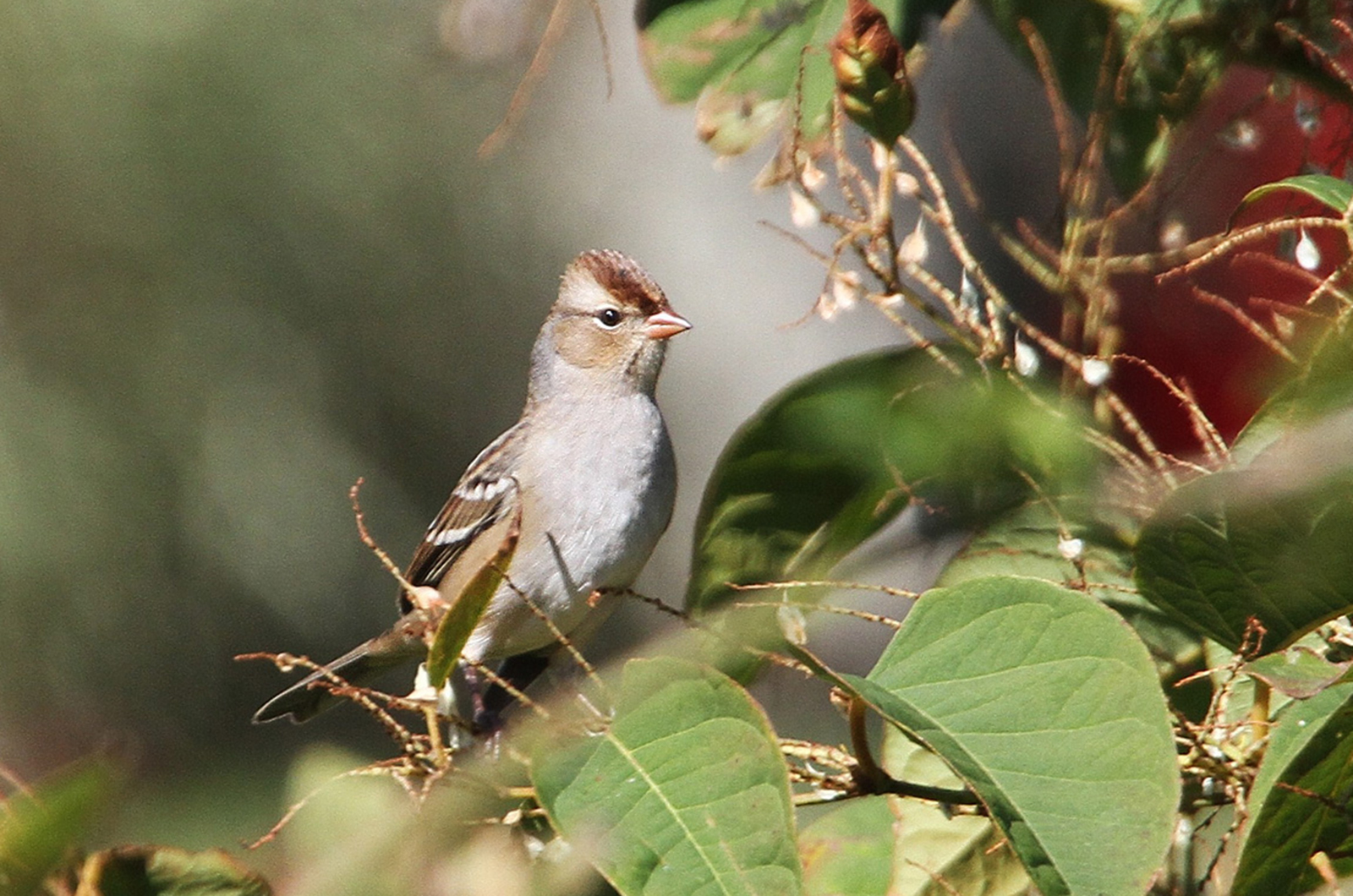Bob Shriber found a sedge wren near the Vanderhoop homestead at the Gay Head Cliffs on Oct. 28. This rare vagrant to the Island nests from the Great Lakes region all the way west to Alaska, and overwinters along the southern Atlantic coast up to Chesapeake Bay. According to Susan Whiting and Barbara Pesch’s book Vineyard Birds II, there are nine records for this species on the Island, with the most recent one seen by the late birders Arnold and Edie Brown and Vern Laux on Oct. 18, 1992. I do not recall any sightings since then.
When a species this rare shows up it generates a lot of interest among Island birders.
Bob Shriber notified a number of others and the word quickly spread. Nancy Nordin, Whit Manter, Phil Stanton, Thaw Malin, Cynthia Bloomquist and Susan Whiting all got to see it on Oct. 28. The next day Margaret Curtin, Rich Couse, Bob Shriber and I were able to see it. Bob saw it yet again on Oct. 30. Who knows: it may still be hunkered down in the thickets there.
This species used to be called the short-billed marsh wren and its close cousin was the long-billed marsh wren. The latter species — now called marsh wren — is more common and we find it during the southward migration in most years. They have been seen recently by Charles Morano on Oct. 15 at Quansoo and the next day one near Squibnocket Beach; Tracy Winn saw two on Oct. 24 along Quansoo Road; and Charles Morano, Susan Whiting and Bob Shriber saw one or two at the Gay Head Cliffs on Oct. 26.
Here is another uncommon migrant; Nancy Nordin spotted a vesper sparrow at the Gay Head Cliffs on Oct. 23. This sparrow is larger than most other sparrows and sports white outer tail feathers, making it easier to identify.
Two species that can be difficult to distinguish are the blue grosbeak and the considerably-smaller indigo bunting. Despite their names, the females and immature males are not blue!
Both species have been seen this week, all at the Gay Head Cliffs. Blue grosbeaks were seen on Oct. 26 by Charles Morano and then by Marilyn Tillinghast, Nancy Nordin, Bob Shriber, Lanny McDowell, Lisa Maxfield, Thaw Malin and Cynthia Bloomquist on Oct. 28. Bob Shriber also saw the indigo this week: four on Oct. 26, that were also seen by Charles Morano and Susan Whiting, and one on Oct. 29 that I also saw. Cynthia Bloomquist and Lanny McDowell both found one at the Gay Head Cliffs on Oct. 28 and Charles Morano saw one on Oct. 30.
White-crowned sparrows are another Gay Head Cliffs specialty this week, although Cynthia Bloomquist, Thaw Malin and Nancy Nordin previously found one on Oct. 16 at the right fork parking lot at South Beach. Again at the Gay Head Cliffs Nancy Nordin found one on Oct. 23; Bob Shriber, Rich Couse and I observed one on Oct. 29; and Charles Morano on Oct. 30.
The only warbler that is widespread now is the winter resident yellow-rumped warbler. Nancy Nordin spotted some other songbirds at the Gay Head Cliffs: one Nashville warbler and one Tennessee warbler on Oct. 23 and a hermit thrush and a pine siskin on Oct. 28.
Kestrels are around there too, seen by Thaw Malin and Cynthia Bloomquist on Oct. 21, Chris Scott and Nancy Nordin on Oct. 23, and by me on Oct. 29.
I think that pretty much finishes the birding news from Gay Head.
Another seasonal arrival comes from the other end of the Island, the Cove Meadow Preserve on Chappaquiddick. Chris Scott found an American coot from there on Oct. 27. They are a regular fall visitor that may survive through mild winters. Chris Scott also saw an American bittern there.
Chris Schmandt spotted two northern pintails at Lucy Vincent Beach on Oct. 23; this species may linger into or through the winter.
The first two Bonaparte’s gulls of the season showed up on Oct. 25 in Lagoon Pond. I enjoyed watching them as they participated in a feeding frenzy with 45 double-crested cormorants and 90 laughing gulls in shallow water at the end of Lagoon Pond Road. The cormorants were diving, catching fish underwater and the gulls were flitting and swooping around, picking their food off the surface of the water. The Bonaparte’s gulls stood out because they were so much smaller than the laughing gulls.
Tree swallows are still lingering. Most impressively, Luanne Johnson spotted a flock of 500 tree swallows at Long Point on Oct. 27. Other sightings of interest are of smaller flocks: Tracy Winn saw 19 along Quansoo Road on Oct. 24; Cynthia Bloomquist and Thaw Malin found three at the Gay Head Cliffs on Oct. 24; Luanne Johnson observed four at the Gay Head Cliffs on Oct. 26; Whit Manter saw 11 at Long Point on Oct. 27; and Marilyn Tillinghast, Luanne Johnson, Kathleen Rawdon and Shea Fee found two at the Gay Head Cliffs on Oct. 29.
Have you ever thought about how difficult to estimate how many birds were in a large flock? The 500 tree swallows mentioned above are one thing but how about hundreds of grackles passing by Tim Rush’s feeders in Coffin’s Field on Oct. 28, or Susan Whiting’s estimate of 900 double-crested cormorants in Tisbury Great Pond on Oct. 27? Making these estimates is more difficult than you think! Another lingering songbird is a scarlet tanager, spotted by Luanne Johnson near the state forest headquarters on Oct. 23.
Please email your sightings to birds@vineyardgazette.com.
Robert Culbert is an ecological consultant with Nature Watch LLC living in Vineyard Haven.








Comments
Comment policy »